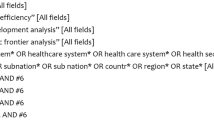Abstract
A model and a heuristic are presented for finding the most effective location of public health centres providing non-vital services in competition with existing private health centres. While private centres provide only services to customers who can pay for them, public centres provide both paid services to affluent customers, and subsidised services to customers belonging to low-income groups (a hierarchical structure). While low-income customers are assigned to fixed public centres, high-income customers can choose which centre to patronise. To find the solution of this problem, the equilibrium between maximum coverage of low-income population (within a pre-specified distance), and an adequate capture of high-income population must be found. Thus, in the public service, the revenues obtained from paid services are used to partly cover the costs of the subsidised services, and the number of centres that can be located depends on how many high-income clients can be captured. Capture of a high-income client happens when a public centre is located closer to the client than any of the existing private centres. Computational experience with optimal, as well as special heuristic, methods for solving this problem is described.
Similar content being viewed by others
Author information
Authors and Affiliations
Corresponding author
Rights and permissions
About this article
Cite this article
Marianov, V., Taborga, P. Optimal location of public health centres which provide free and paid services. J Oper Res Soc 52, 391–400 (2001). https://doi.org/10.1057/palgrave.jors.2601103
Received:
Accepted:
Published:
Issue Date:
DOI: https://doi.org/10.1057/palgrave.jors.2601103




